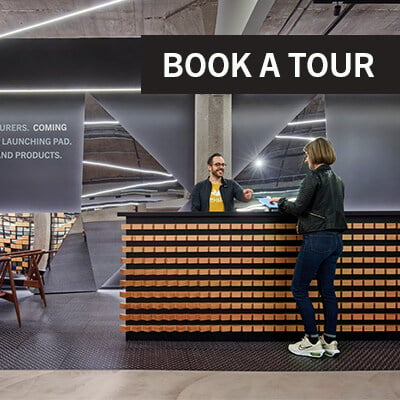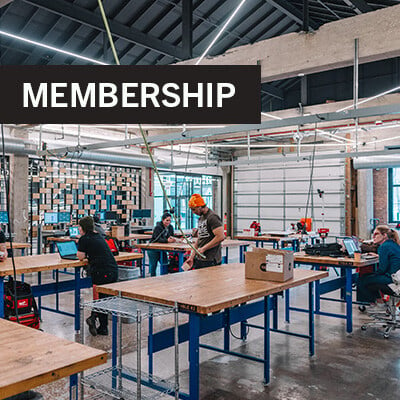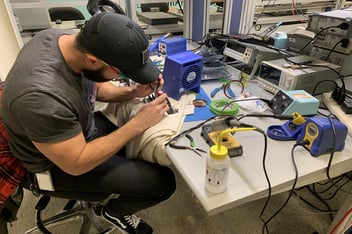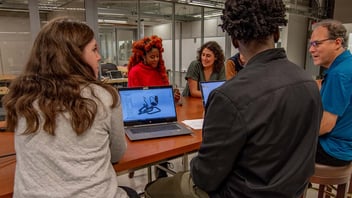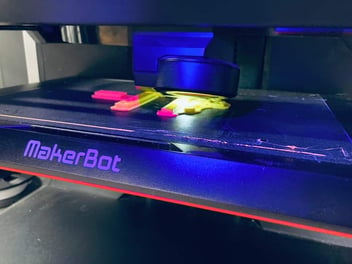Author: Steve Kase, Managing Director, ASK Products Inc.
Innovation can look very different company to company...
But there are thematic methods that an entity chooses to follow, largely dependent on their risk tolerance and available resources.
When it comes to product development, supplier innovation follows the particular demands of the markets being served; where the macro-trends and specific customer needs determine which approach is most likely to succeed. Here are three approaches to innovation and product development.
Evolutionary Product Development
Evolutionary product development is the traditional mode, wherein suppliers follow customer-driven needs, typically adding features and performance that incrementally enhance the customers’ product experience and use. Intimate connection and a continuous feedback loop between the supplier and customer, as well as the supplier with their vendors, shines a clear light on the values that a certain product design must serve.
Taking an evolutionary approach in hardtech (physical product innovation with soft tech integration) product and process design typically follows the form, function, and tooling of previous products. Completely new designs are costly; and, thus the increased sales and/or market penetration of evolutionary innovation is typically incremental. Not surprisingly, evolutionary innovation in product development usually draws upon engineering and technical skills already owned by the supplier. This is the least risky, most confident mode of innovation.
Supply Chain Jumping
Supply Chain Jumping is an innovation approach which involves component suppliers moving up the supply “food chain,” competing with their historic customers by producing complete systems of components that typically address somewhat new market demands. It’s the need or desire to make things that the manufacturer has never made before. It is difficult to displace an incumbent who sells systems, as they can have strong volume economics and customer “stickiness”. Yet new market demand can allow a vendor to “jump”.
An interesting example occurred in the automotive market when “sounds” became a desirable value: exhaust pipes, door closings, seat moving sounds were all seen as adding to the overall owner luxury perception. A number of component manufacturers, with market experience, felt they might complete with their existing customer, going around them to sell complete systems to the top tier suppliers.
This approach to innovation and product development can involve significant investment for new tooling, new processes and new marketing. There is a larger technical risk because you are tooling up aspects of a product you have not historically been an expert in or hired talent for. Often, players who “jump” attract engineering and marketing talent from their former customers, who become competitors. Yet one must be careful to enter in a way that doesn’t threaten important segments of existing customers that a company does not intend to compete with. In hardtech, contract engineering can be of great value. Partnerships reduce risk with outside expertise, making it easier to innovate and reduce initial investments. Risk in “jumping” is compounded by hardtech challenges and investment risks.
Disruptive Innovation
The third kind of innovation in product development is “disruptive.” Clay Christensen, Harvard’s innovation thinking leader, distinguished disruptive from the previous modes in that disruptive product design becomes feasible when a key customer value changes. In his book, “The Innovator’s Dilemma,” he follows the disk drive business, which for most of its first decade rewarded suppliers who could provide incrementally more storage volume at lower cost. When, however, volume/cost was replaced by “size,” meaning smaller devices could make the new “PC” smaller and more portable, the original volume of data demand was disrupted and replaced by size. The new size-sensitive computer products, like laptops, MP4’s etc., need not save huge volumes of data; but, just enough in a portable space. Suddenly, the disruptive market value changed and a whole industry dependent upon big storage began disappearing.
Suppliers who succeed in disruptive markets need to bring expertise and results from competitive markets; but, their experience in the new market value means “thinking out of the box”. This is where startups can come in and the multi-market intelligence of their engineers. They have no allegiances to the past, though they may have been trained there; they pull knowledge from wherever it can be found and solve problems the incumbents think are irrelevant. In a disrupted environment, engineering and technical support are critical as is the ability to design a prototype, which will convince the new market value customer to buy/invest.
Values change here too, nimble replaces powerful, small versus large, revolutionary thinking versus evolutionary. Startups have a number of motivations that are totally different than a manufacturer. For example, they might value a single prototype success versus increasingly high volume competition. Communication is key to this relationship, so manufacturers know how to recognize and tackle innovation and contract innovators know how to apply their accelerated approach to scale.
mHUB Hardtech Development services help facilitate and manage this relationship, contributing to any of the three stages described above. As innovation proceeds from evolutionary to disruptive, the stakes get higher as well as the need for engineering talent that may not be on staff and which understands hardtech prototyping product design challenges. Startups, as noted, can provide great speed and nimble product development.
Do you have a research and development need? Tell mHUB Hardtech Development services about it by completing the form below.
ABOUT THE AUTHOR
Steven Kase is founder, owner, and CEO of ASK Products, Inc., a manufacturer of electrical connectors for the truck, automotive, telecom, utility, and military marketplaces. He was 2012 chairman of the board of the Technology & Manufacturing Association (TMA), Illinois’ largest full service manufacturing association, where he has championed the evolution of manufacturing technical training at the TMA to address the vast and growing needs in the technical skills acquisition marketplace. Steven previously served as chairman of the board of the Valley Industrial Association and chairman of the Mentor’s Action Network. He was general manager of FMC’s Petroleum Equipment Division in Venezuela, founding, building, and establishing market domination for the operation. Steven holds a Master’s in Business Administration from Harvard’s Business School and a Bachelor of Arts from Yale University.
